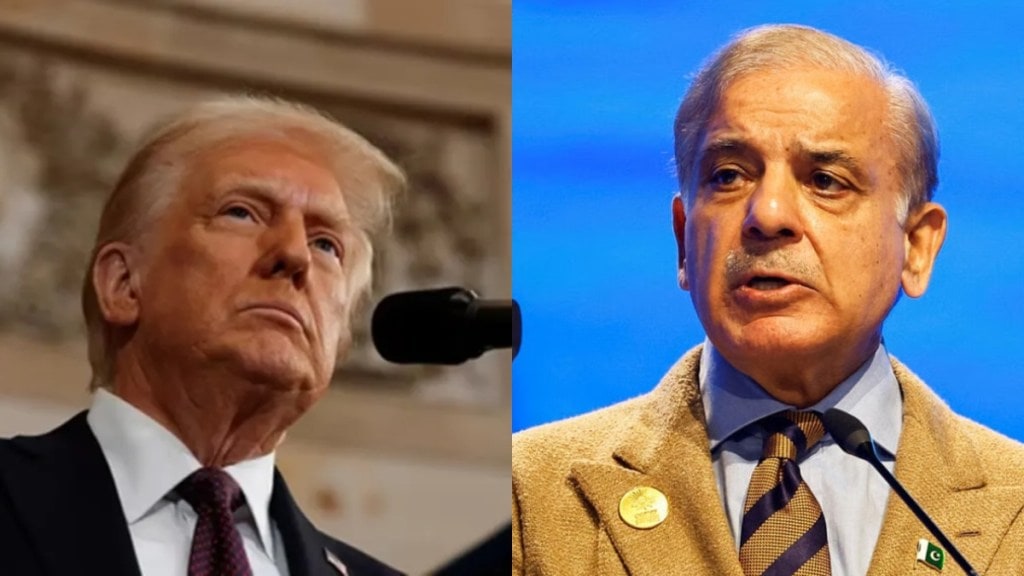India-Pakistan Conflict: After Donald Trump on Wednesday announced a new trade deal with Pakistan, declaring that Washington will assist Islamabad in developing its “massive oil reserves,” Prime Minister Shehbaz Sherif thanked the US President for his “leadership” in the “historic US-Pakistan trade agreement.”
Sharif’s post on X reads, “I wish to convey my profound thanks to President Trump for his leadership role in finalization of the historic US-Pakistan trade agreement, successfully concluded by our two sides in Washington, last night. This landmark deal will enhance our growing cooperation so as to expand the frontiers of our enduring partnership in days to come.”
I wish to convey my profound thanks to President Trump @realDonaldTrump for his leadership role in finalization of the historic US-Pakistan trade agreement, successfully concluded by our two sides in Washington, last night.
— Shehbaz Sharif (@CMShehbaz) July 31, 2025
This landmark deal will enhance our growing cooperation…
US-Pakistan trade
Taking to Truth Social, Trump wrote, “We are in the process of choosing the Oil Company that will lead this Partnership. Who knows, maybe they’ll be selling Oil to India some day!”
The US-Pakistan partnership, according to Trump, is part of his MAGA initiative aimed at reducing America’s trade deficit through aggressive negotiations and bilateral energy development projects.
The announcement has sparked curiosity in global markets, especially in India, which shares a complicated history with both Pakistan and the United States in the wake of Operation Sindoor.
What do we know about Pakistan’s oil reserves?
According to Dawn, Pakistan recently discovered a major offshore oil and gas reserve. Pakistan’s confirmed oil reserves currently stand at around 353–500 million barrels. According to Dawn, officials see this as a potential gamechanger for their struggling economy. However, former Pakistani regulator Muhammad Arif, as per the Offshore Technology report, urged caution, noting there is no guarantee the reserves are as large or extractable as hoped. He added that if viable, the reserves could reduce Pakistan’s reliance on energy imports but only after thorough analysis and successful drilling operation
India hit with 25% tariff and penalties
Trump’s declaration came alongside the announcement of a 25% tariff on Indian imports, to be implemented from August 1. The rate is slightly lower than the 26% he mentioned during his April 2 ‘Liberation Day’ speech, but the sting remains potent. In addition, Trump said India would face penalties for continuing to buy military equipment and energy from Russia.
“While India is our friend,” Trump said, “they have some of the highest tariffs and most obnoxious non-monetary barriers in the world.” He added, “They are also Russia’s largest buyer of energy… all things not good!”
The penalty is seen as a direct warning to India over its continued engagement with Moscow amid the ongoing Ukraine conflict, an issue where Washington has long sought to pressure Delhi for alignment.
Sanctions on Indian firms over Iran trade
The US Department of State also announced sanctions on at least six Indian companies for allegedly violating American sanctions on Iran. The firms are accused of engaging in “significant transactions” involving Iranian petroleum and petrochemical products throughout 2024 and early 2025.
Alchemical Solutions Private Limited tops the list, facing allegations of importing over USD 84 million worth of Iranian petrochemicals. Global Industrial Chemicals Limited, Jupiter Dye Chem, Ramniklal S Gosalia and Company, Persistent Petrochem, and Kanchan Polymers were also named for similar violations, involving products such as methanol, toluene, and polyethylene.
Experts view US President’s latest moves as classic Trump strategy, using high tariffs and penalties to gain leverage before negotiating a softer deal.
While New Delhi has yet to issue a detailed response, Commerce Ministry officials have reiterated that “India’s national interest remains paramount.” Meanwhile, trade negotiations are still ongoing, and geopolitical frictions are increasing.

